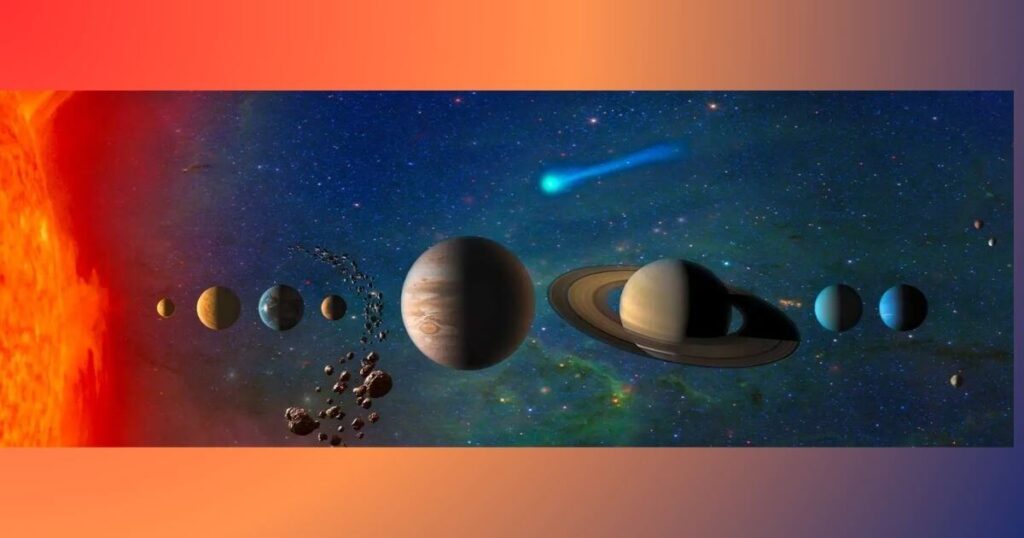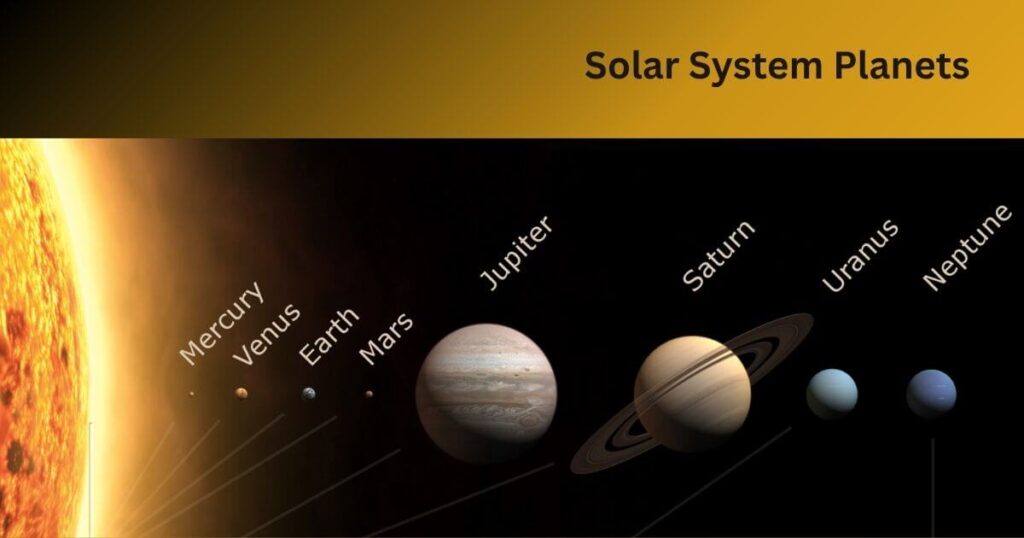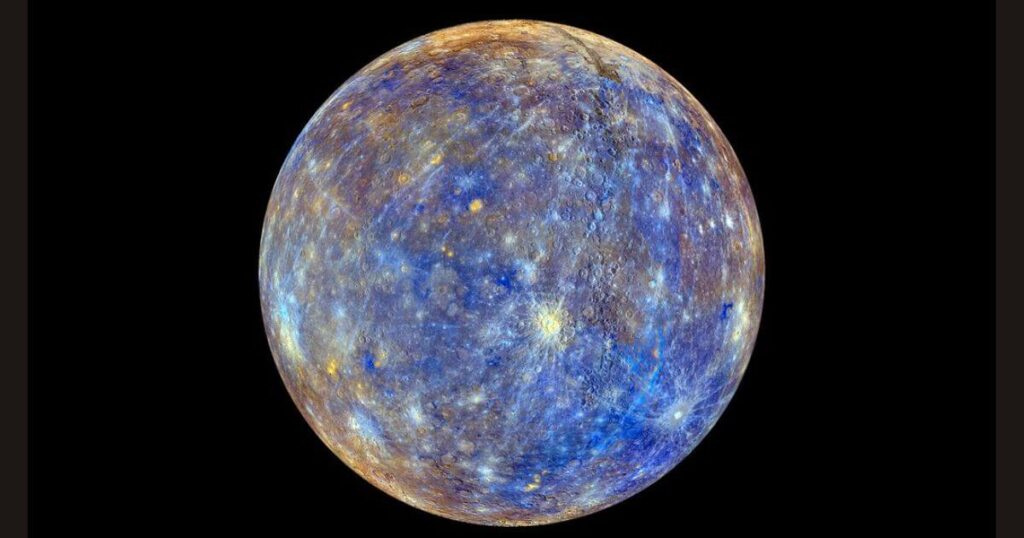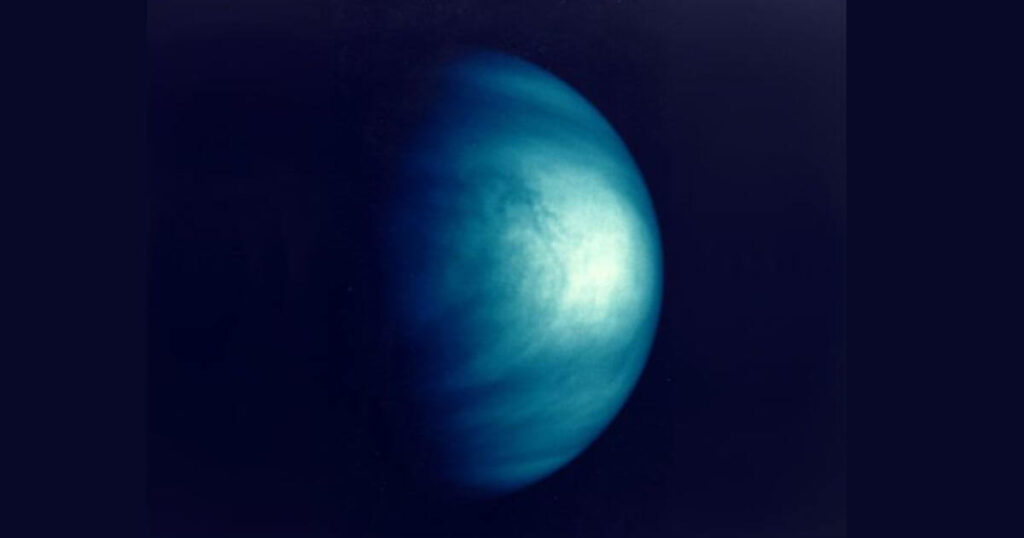
Solar System GK | Important Questions on sSolar System
The solar system contains the Sun, eight planets, five named dwarf planets, many moons, and countless asteroids and comets. It lies in the Milky Way galaxy, which has two main arms and two smaller ones. Our Sun is located in a minor arm called the Orion Spur, between the Sagittarius and Perseus arms. The solar system travels around the galaxy’s center at about 515,000 mph (828,000 kph), completing one orbit in roughly 230 million years.
Important Questions on Solar System
Q. Who discovered the solar system?
Ans: Copernicus
Important Points:
8 planets are:
- Mercury (Smallest)
- Venus (Also Known as morning star/ evening star and it is Nearest to Earth )
- Earth
- Mars
- Jupiter (Largest)
- Saturn
- Uranus
- Neptune

- Solar system was discovered by Nicolaus Copernicus and he was from Poland
Other Discoveries related to the solar system
- Phases of Venus, Satellites of Jupiter – Galileo Galilei
- Earth-Centered Universe – tolemy
- Laws of Planetary Motion – Kepler
Q. Which planets does not have natural satellite ?
Ans: Mercury and Venus
Important Points:
Earth is having one natural satellite- Moon
Characteristics of Planets
- Biggest planet- Jupiter
- Smallest planet- Mercury
- Largest satellite – Ganvllede
- Blue Planet – Earth
- Green Planet – Uranus
- Brightest Planet – Venus
- Brightest star (outside the Solar System) – Sirius
- The farthest planet from the sun- Neptune
- Nearest star of the solar system – Proxima Centauri
- Coldest planet – Uranus (Uranus has the coldest atmosphere of any planet in the Solar System, with average cloud-top temperatures around –224°C, despite being situated closer to the Sun than Neptune. In comparison, Neptune, which lies farther out, has an average temperature of –214°C, making it the second coldest planet.)
- Hottest planet- Venus
- The densest planet- Earth
- Evening Star – Venus
- Red Planet- Mars
- Morning star- Venus
- Planet with maximum number of satellites- Saturn
- The nearest planet to the Earth- Venus
- Nearest planet to the Sun- Mercury
- Earth’s twin- Venus
Q. What is the temperature on the surface of the Sun approximately ?
Ans: 6000°C
Important Points:
- The Sun’s core is made of hydrogen gas.
- Hydrogen gas atoms continuously interact with each other and form helium atoms.
- The process of nuclear fusion occurs when hydrogen atoms are compressed and fused together, forming helium.
Q. What is the maximum distance of a planet from the Sun in its orbit called ?
Ans: Aphelion
Important Points:
The minimum distance of planet from Sunt in its orbit is called Perihelion
Q. How many minutes does the sunlight take to reach the earth ?
Ans: 8.16
Important Points:
- The Sun is, 109 times bigger than the Earth
- The density of the Sun is ½ of the density of the Earth
- Its composition is found to be 71% hydrogen and 26.5% helium.
- The source of the Sun’s energy is nuclear fusion, in which a small nucleus of a hydrogen atom fises into helium.
Q. Equinox refers to the date when _______?
Ans: day and night are of equal duration
Important Point:
- The equinoxes occur in March (around March 21)
- and September (around September 23)
- These are the days when the sun is exactly above the equator, which makes day and night of equal length.
Q. What is the period of Halley’s Comet ?
Ans: 76 years
Important Points:
- A body of frozen gases, rock and dust in an elongated orbit around the Sun is called a comet.
- Halley’s Comet was lallt seen from Earth on – March 8, 1986.
- In which year is the next appearance from Earth- 2061.
- The tail of a comet always point – away from the Sun
Q. Which is the nearest planet from the Earth ?
Ans: Venus
Q. Which planet has the maximum axial tilt ?
Ans: Uranus
Q. Which is the hottest planet in the solar system ?
Ans: Venus
Important Point:
Venus is hotter than Mercury even though it’s farther from the Sun because its dense carbon dioxide-rich atmosphere traps heat through a strong greenhouse effect. In contrast, Mercury’s thin atmosphere allows heat to escape easily.
Also Read Environment Current Affairs
Q. How many degrees the earth makes an angle with its axis on the orbital plane while revolving on its orbit?
Ans: 66.5°
Q. Due to the presence of which gas , the planet Neptune appears green ?
Ans: Methane
Q. Which celestial body is called ‘Son of Earth’?
Ans: Moon
Important Point:
- In which phase of the moon, the moon becomes invisible – Amavasya
- Mass of the Moon – 7.341k 10^22 kg
- Moon’s light reached to the earth in – 1.3 seconds
Q. Asteroids are found between which planets ?
Ans: Mars and Jupiter
Important Point:
- Apart from stars, planets and satellites, many small bodies also revolve around the Sun, these bodies are called asteroids.
- Four largest asteroids- Ceres, Vesta, Pallas, Hygeia
Q. What is Syzygy (Yuti-Viyuti) ?
Ans: Position of Sun, Earth and Moon in the same straight line
Q. What are the celestial bodies that revolve around the Sun called ?
Ans: Planet
Q. What is a small celestial body revolving around a planet called ?
Ans: Satellite
Important Point
- Using which an artificial satellite can be tracked very accurately from the rth – Doppler effect
Q. Who propounded the law of planetary motion ?
Ans: Kepler
Important Point:
- Kepler’s first law: Every planet revolves around the Sun in an elliptical orbit and the Sun is located at one of its two centres. It is also called the ‘law of orbits’
- Kepler’s second law: The line joining any planet to the Sun covers equal areas in equal intervals of time.
- Kepler’s third law: The square of the period of revolution of any planet around the Sun is proportional to the cube of the semi-major axis of the planet’s orbit. It is also called the law of periodicity
Q. How many planets are there in the solar system ?
Ans: Eight
Important Point:
- There are 8 planets in the solar system namely -Mercury, Venus, Eąrth, Mars, Jupiter, Saturn, Uranus, Neptune
- Inner Planets -Mercury, Venus, Earth and Mars
- Outer Planets – Jupiter, Saturn, Uranus and Neptune
- Bright Planet – Venus
- Smallest planet – Mercury
- Largest planet – Jupiter
- Planet with rings – Saturn
Q. The correct order of the first 4 planets according to their increasing distance from the Sun ?
Ans: Mercury, Venus, Earta, Mars
Q. The correct order of the first 4 planets according to their increasing distance from the earth ?
Ans: Venus, Mars, Mercury, Jupiter
Q. How many constellations are there in space ?
Ans: 88
Q. On which planet is Mount Nix Olympia Columbus situated ?
Ans: Mars
Important Points:
Olympus Mons, also referred to as Nix Olympia, is found on Mars. It holds the title of the tallest mountain and the biggest volcano in the entire solar system.
Q. What is the number of terrestrial planets ?
Ans: 4
Important Point
- The four planets closest to the Sun – Mercury, Venus, Earth and Mars are called terrestrial planets.
- Jovian planets or outer planets are Jupiter, Saturn, Uranus and Neptune as they are all massive compared to Earth, and they have gaseous nature
Q. Who is called the father of the solar system?
Ans: Sun
Important points:
The Sun is commonly called the “father of the solar system” because it is the central body that all planets, moons, comets, and asteroids revolve around. It holds nearly 99.8% of the solar system’s mass and supplies the energy and warmth essential for life on Earth.
Q. The sun always rises in the east because ?
Ans: Earth rotates from west to east
Q. Which planet takes the shortest time to revolve around the Sun ?
Ans: Mercụry

Q. Which is the fastest moving planet around the Sun ?
Ans: Mercury
Important point:
Mercury moves around the Sun faster than any other planet, with an average orbital speed of about 47.87 km/s (29.74 mi/s). It finishes a complete orbit in just 88 days on Earth.
Q. Which planet is called the ‘God of Beauty’ ?
Ans: Venus

Q. Seasons are caused by the _______ ?
Ans: Earth’s revolution around the Sun
Q. Which is the smallest satellite of the solar system?
Ans: Deimos
Important Point:
The tiniest natural moon in our solar system is Deimos, which orbits Mars. It’s really small and oddly shaped, stretching only about 15 kilometers (9 miles) across at its widest spot.
Q. Who said for the first time that the earth is round ?
Ans: Aristotle
Q. An exploding star in the universe is called?
Ans: Supernova
Q. The average distance between _____________ is called ‘astronomical unit’?
Ans: Earth and Sun
Q. What is the meaning of ‘Midnight Sun’ ?
Ans: Sun shines for a long time in the polar circle
Q. Which is the nearest planet to the earth ?
Ans: Venus
Q. Earth rotates on its axis ?
Ans: West to East
Q. From the point of view of size, what is the place of the earth in the solar system ?
Ans: 5
Important Point:
- The correct descending order of the planets in terms of size in the solar system is as follows – Jupiter, Saturn, Uranus, Neptune, Earth, Venus, Mars, Mercury.
Also read IIT Current Affairs 2025


